Discover 8 Hardy Palm Trees for Your UK Garden
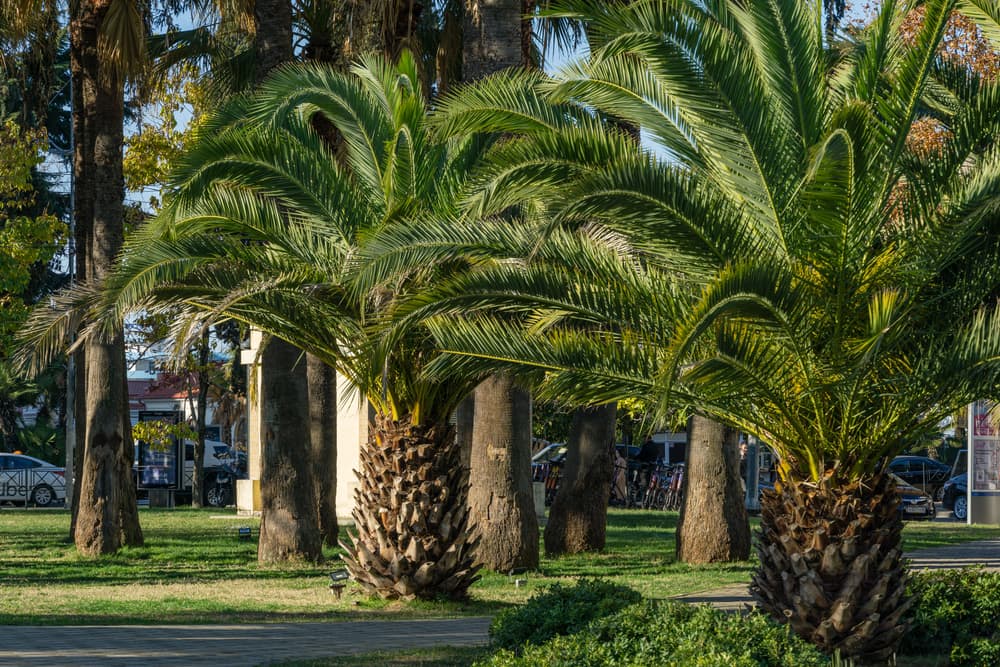
Table of Contents
Growing exotic tropical palm trees in a country like the UK, with different weathered seasons, is challenging. However, these palms come with a history from over 5000 years to Mesopotamia. At that time, palms were used as food and shelter from the sun, resonating with a relaxing environment. That’s one of the primary reasons why everyone in the UK is keen on planting them to have a summer feel in their garden.
Because palm trees belong back to warmer places, not all of them can survive the colder temperatures of the city. Fortunately, there’s a shocking number of hardy palms that you can grow in the UK’s occasional freezing weather.
However, before jumping straight to the best palm trees you can grow in the UK, let’s first understand how to pick the right one.
List of Best Hardy Palm Trees You Can Grow In The UK
1. Needle Palm (Rhapidophyllum hystrix)

Needle Palm is one of the hardiest palm trees grown in the UK. However, it does develop at a slower pace than others palms. This palm tree either requires hot summers or cold winters, with temperatures going down to -15 degrees, to mature successfully. Rhapidophyllum Hystrix is preferred in the Southern part of the UK in a sheltered area facing south or west. It forms clusters of beautiful leaves up to 1 meter in height when mature. The needle palm tree is a magical plant because of its regenerative powers. There’s always a good possibility that it will grow back, even after suffering a hard-colder winter that killed it to the ground.
2. Fan Palm (Trachycarpus)
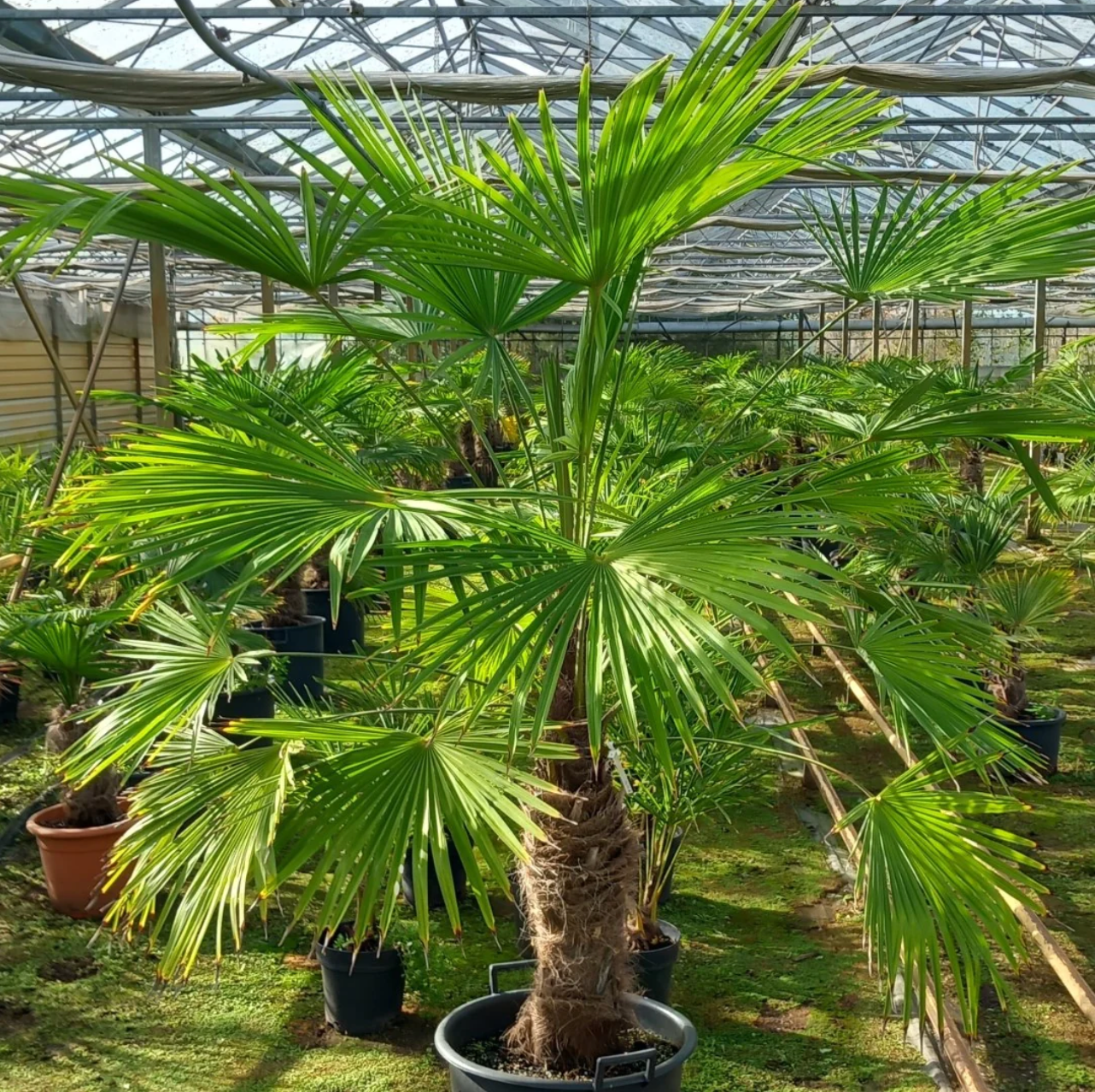
The most accessible available and most-grown palm tree in the UK is the Trachycarpus species. Trachycarpus Fortunei and Trachycarpus Wagnerianus are the two fan types often seen in the British Isles. Trachycarpus Fortune (Chusan/Windmill Palm) is the most popular palm tree, 7-8 meters tall, with sizeable fan-shaped palm leaves. In their natural environment, they grow up to 20 meters or taller. When planted, they grow steadily, tolerate heavy soils, and withstand up to -15 degrees. However, if you stay in a windy location, keep the Windmill Palm in a more protected area or go for the Trachycarpus Wagnerianus species. Trachycarpus Wagnerianus (Dwarf Chusan or Windmill Palm) is similar to Fortunei, except for much stiffer leaves. Because of its thicker leaves, it is a much better choice for exposed locations. Moreover, Wagnerianus is slightly smaller, over 3 meters, yet still looks good enough in proportion to the trunk.
3. Mexican Blue Palm (Brahea Armata)
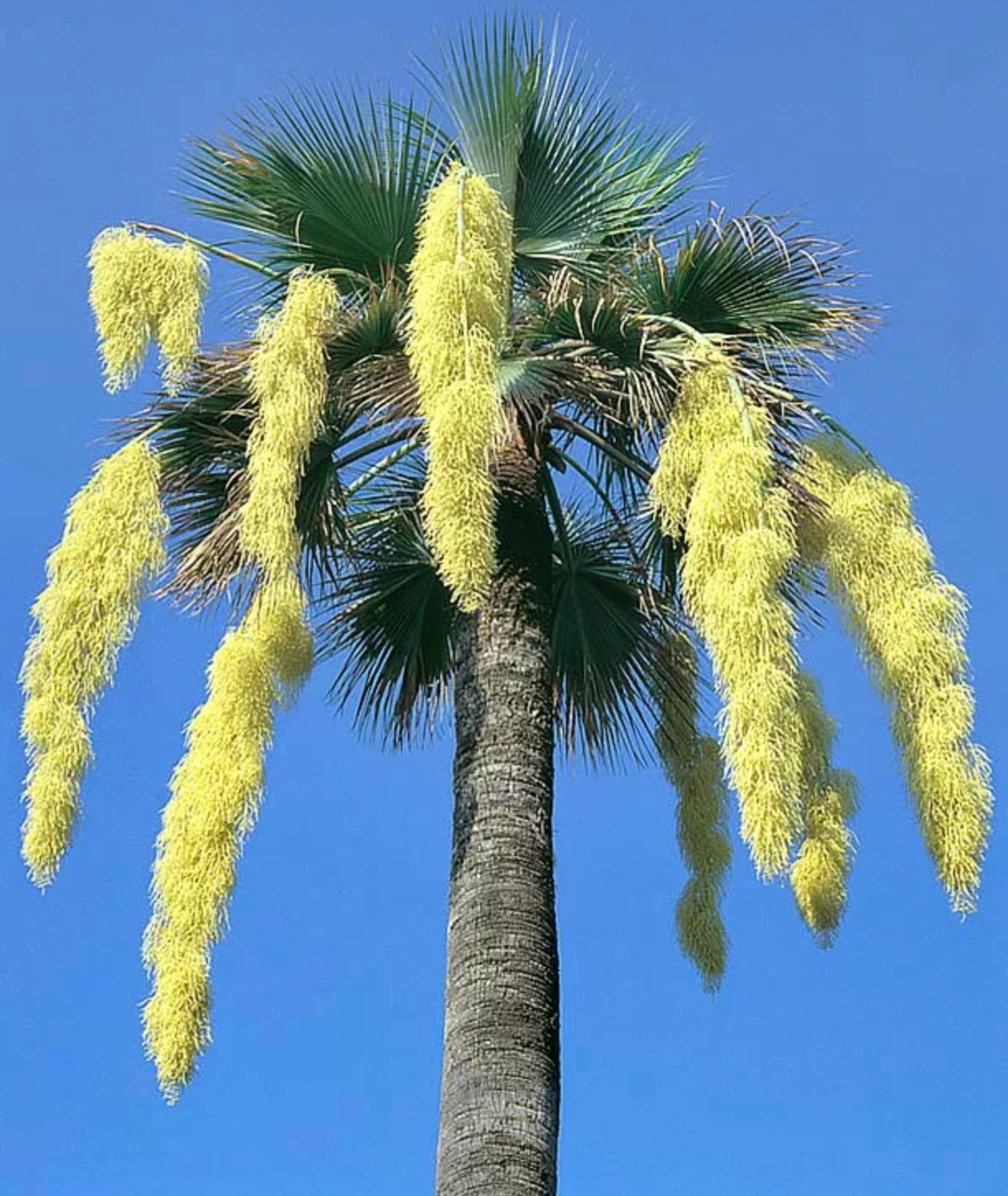
Brahea Armata, a Mexican plant, grows into fascinating fan-shaped canopies of blue-green leaves and tassel-like flowers. It’s a slow-growing palm that matures into a big, thick 45-centimetre trunk. The Mexican Blue Palm is an excellent addition to a hot conservatory as it can tolerate the full sun with dry air. However, it should be moved to a shelter in the colder months to survive. You can plant it between May and September, and it will grow to a height of 2 meters and spread to 1.5 meters. These palms can bear winter temperatures of up to -8 degrees or lower if appropriately maintained.
4. Areca and Kentia Palms (Chrysalidocarpus Lutescens and Howea forsteriana)

If you look at the best palm trees for the UK, Areca and Kentia Palms will surely bring the breezy tropical to your home or office space. Chrysalidocarpus Lutescens can be planted as both an indoor and an outdoor plant. When grown indoors, they grow to a maximum height of 2.5 meters. However, in natural outdoor conditions, they snowball up to 10 meters in altitude. The Areca Palms have long, evergreen fronds (a large, divided leaf), appearing on golden stalks arching upwards, outwards, and downwards. They have a slow growth rate but spike up in the right conditions, which requires a healthy amount of water. The Kentia Palm is an adorable indoor plant that can be effortlessly grown in a container that doesn’t mind darker places. It has a similar form to Areca Palms but doesn’t grow in direct sunlight. Howea Forsteriana even produces oval-to-round, red and orange fruits to devour.
5. Caranday Palm (Trithrinax Campestris)
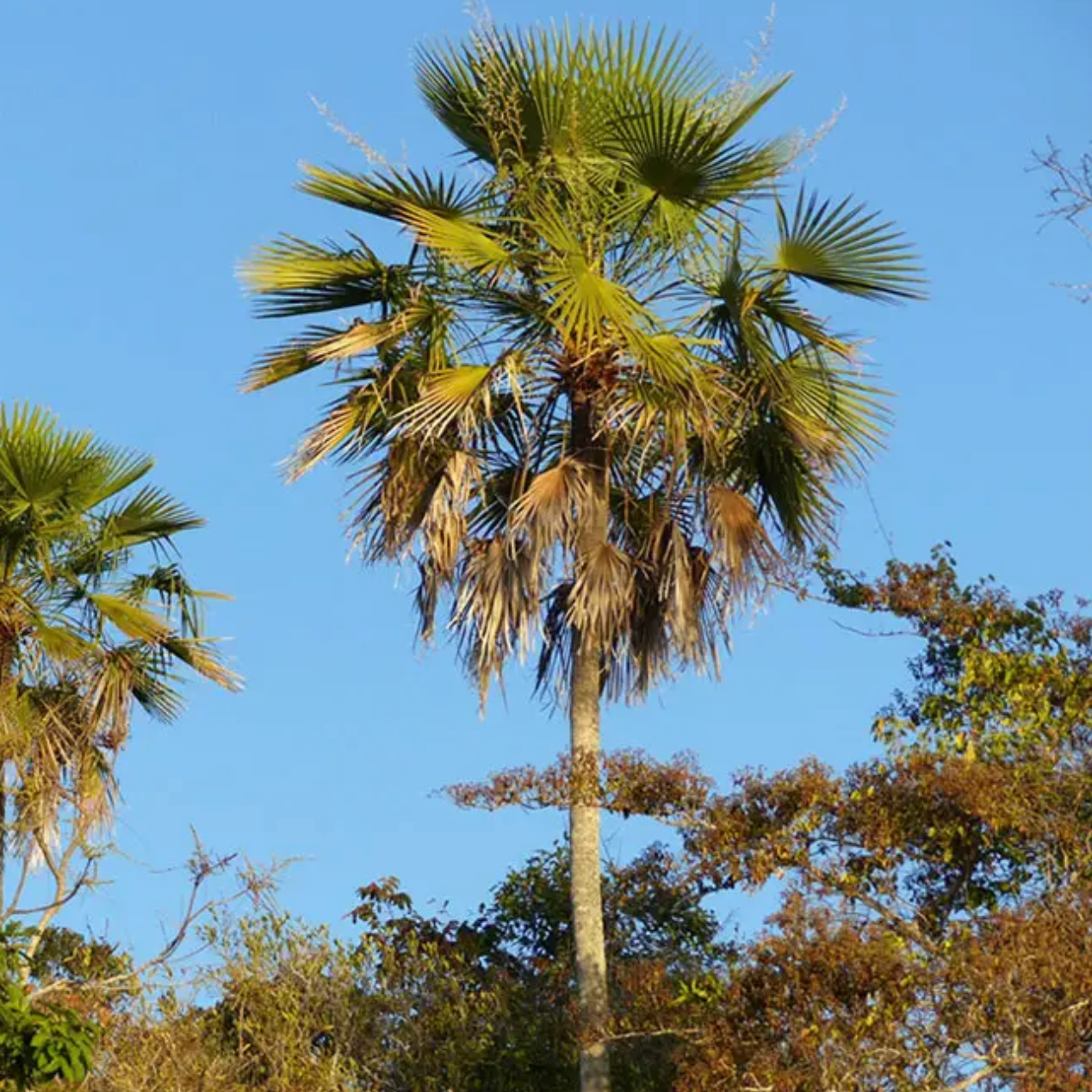
Caranday Palm is also one of the best palm trees in the UK, as they work just fine in windier spots with some maintenance. It has fan-shaped blue-green leaves thick enough to tolerate higher winds. For growing Trithrinax Campestris, you only need patience, as they are a slow-grower yet painlessly easier to plant. And can grow up to 5 meters tall. The palms are supposed to be spiny, as some get the spines from their petioles (a branch that joins the blade with the leaf’s base). At the same time, others protrude spines from their trunks. When placed in the perfect environment, under sun and warmth, they can survive colder weather leading to -12 degrees.
6. Chinese Fan Palm (Livistona Chinensis)
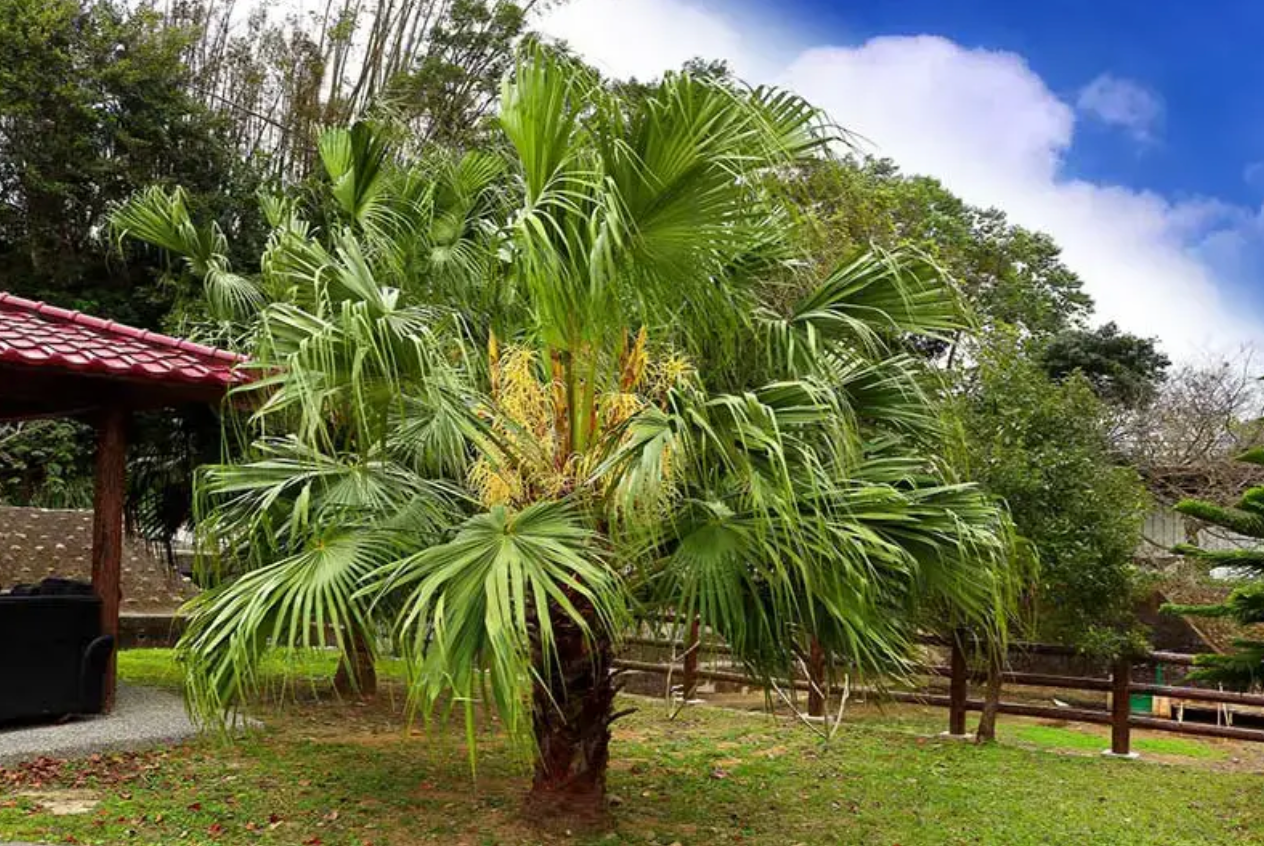
The Chinese Fan Palm is one of the best palm trees in the UK, which grows abruptly fast, turning into a cold hardy palm tree in no time. It has a single grey-brown trunk, stacked by a dense crown of fan-shaped leaves, facing downwards in a fountain-like look. Hence, they are famous by the name Fountain Palm. Livistona Chinensis starts to grow slower, then speeds up to half a foot a year. And, because of its moderate size, it can also be developed as an indoor plant. With larger leaves spreading across up to 1 meter, it comes out in blue-green to olive-green shades. You can quickly plant Chinensis without worrying about exposure to full or partial sun and wind. Their height ranges between 6-9 meters, providing the perfect environment. This hardy palm tree can tolerate chilly temperatures till -6 degrees. And are very well-known in the Southern states and as far as Oklahoma.
7. New Zealand Cabbage Palm (Cordyline Australis)
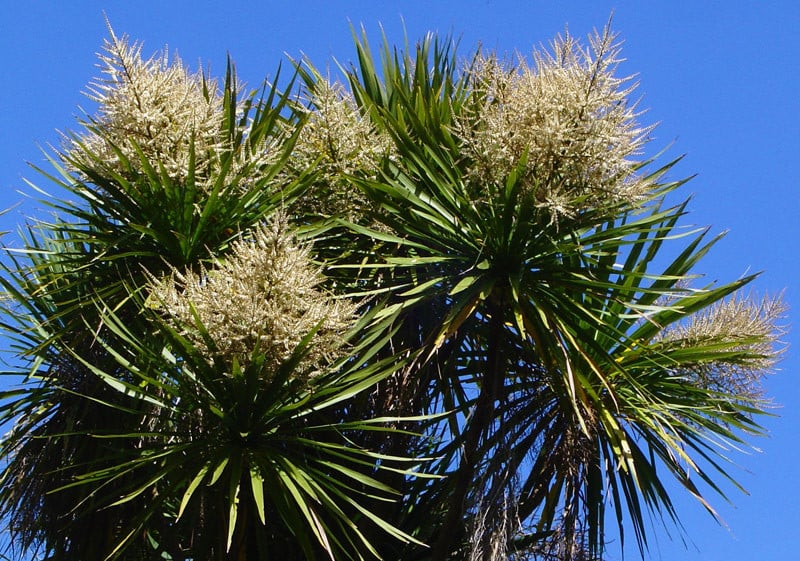
New Zealand Cabbage Palm trees are realistic illustrations to fill your garden with a pleasing aura. So naturally, they are single-trunked taller trees that only sometimes stay that long. Because of harsher colder weather, they fall out but regrow from the base to a certain height. Cordyline Australis grows into vast-spiked leaves with scented flowers that bloom in the late summers. The flowers have such a strong fragrance that they can fill a garden. This palm tree also works as an excellent shelter for birds in winter, growing to 5 meters tall and spreading across 1.5 meters.
8. Puerto Rican Thatch Palm (Cocothrinax Alta)
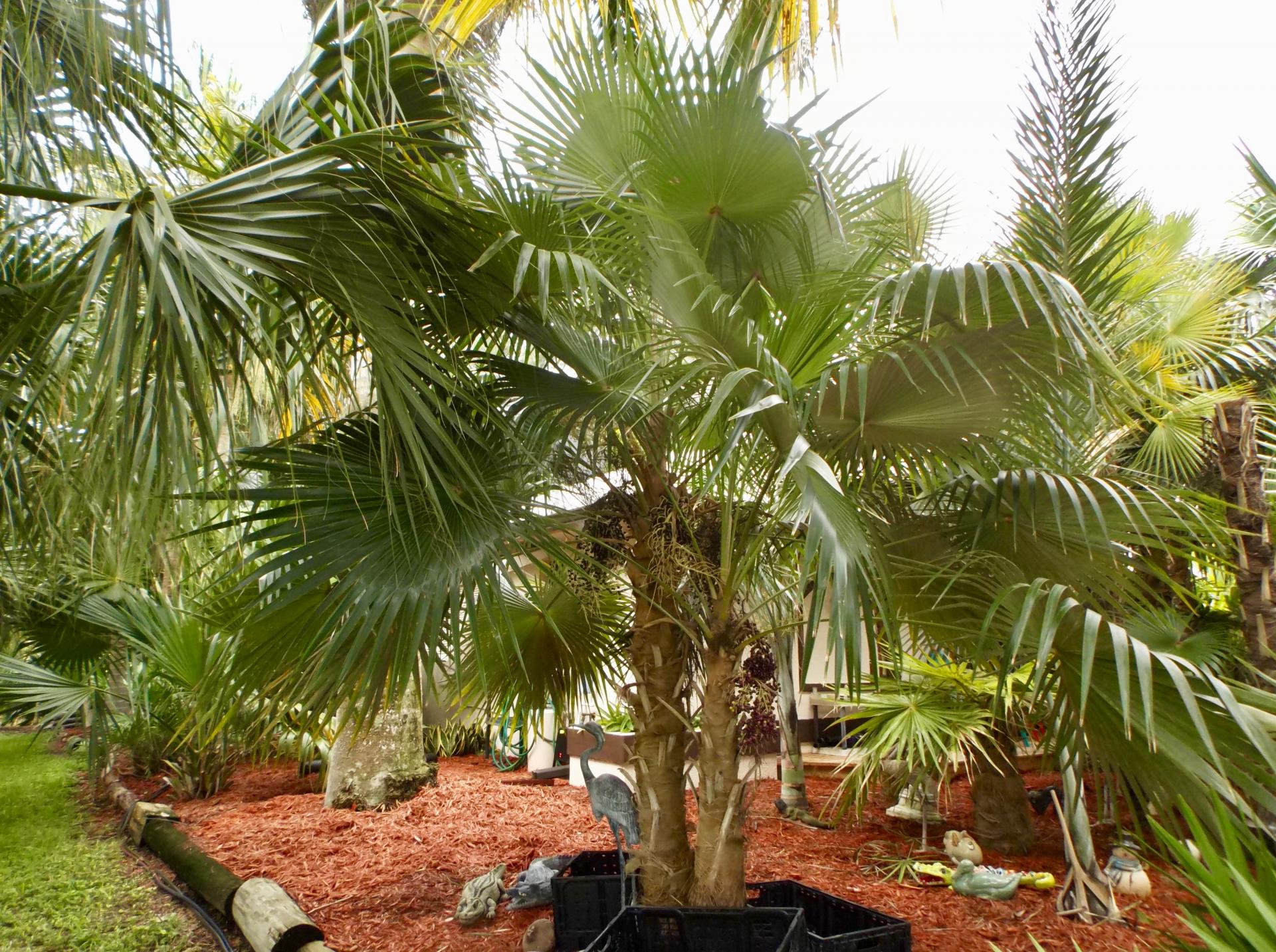
Cocothrinax Alta, grown in the regions of Puerto Rico and the Virgin Islands, is famous for its name, Barbados Silver Palm. It grows on fragile limestone-based soils, is fully exposed to the sun, and can effortlessly survive higher winds. Puerto Rican Thatch Palm is a palmate-leaved tree with a beautiful beachside landscaping view. It is a single-trunked, exceptionally taller palm with silver undertones that look like a flagpole from afar. They can grow up to 15 meters tall. They can survive colder weather when appropriately maintained, dropping to -2 degrees.
Tips for Planting Palm Tree
Most of the palm trees come in as already potted. However, if you want to plant it yourself, then here are some easy tips for doing the same-
- Choose a healthy plant that can survive the hotter and colder temperatures and plant them as soon as you receive or buy them.
- The most favoured time to plant palms is spring or summer when the soil temperatures rise.
- Use a mixture of horticultural grit and John Innes No.3 potting compost for more robust roots.
- Please place them in a bright, clean spot with partial sunlight, and keep their roots moist, but don’t flood them. You can drill a small hole just above the base for the potted ones to check whether they are wet enough.
- After ensuring that your soil is well-drained, dig a hole twice the size of the pot in your garden and place it right in.
- When the winters come, keep them warm with a thick layer of mulch glue around their base. You can also apply a freeze-protecting spray to your palms when extra protection is needed.
How to Choose the Right One?
Nothing says tropical than watching palms grow in a household English garden. So, to choose the best palm trees for the UK, follow the process-
- The first crucial step is selecting the tree that sustains heat and cold temperatures. Or choose the one that suits your growing zone the best.
- The older the tree, the better it can survive in harsher weather.
- Find a suitable place with a less-windy location to protect it, especially in winter.
- Lastly, find one that can easily keep warm and dry in colder weather.
Which Is the Best Palm Tree?
Regardless of which palm tree you choose and where you grow them, they provide a soothing environment. And they have many health advantages, like working as excellent air-filter devices, absorbing toxic substances, and providing fresh air. So by planting just a single palm, you can have beauty, and health benefits, much cleaner air, and a calming view to adore.
However, when it comes to cultivating and protecting them from cruel winters, it surely can be a demanding process. They need constant care and proper maintenance to survive and live longer.
So, if you are a nature enthusiast, order a palm tree now and get it delivered to your doorstep instantly.
Frequently Asked Questions (FAQs)
Which Are the Best Palm Trees for the UK?
Rhapidophyllumhystrix and Trachycarpus fortunei are the two most popular hardy palm trees you can grow in the UK. This is because they tend to survive colder temperatures than the rest.
Which Is the Coldest Hardy Palm Tree?
Saw Palmetto (Serenoa repens) is the top cold-hardy palms, sustaining temperatures below zero. It is a small, shrubby plant grown in the ground with stems sprouting from beneath the ground rhizomes.
How Much Do Palm Trees Cost?
The price depends mainly on the size and species of palm tree you buy. Their cost ranges from £100 to £500.
Can Palm Trees Tolerate Extended Cold Weather?
As we mentioned in the article, some palm trees can withstand harsher temperatures. However, they can tolerate the -17 degrees for a maximum of 2-3 days. Therefore, palm trees may die sooner than expected if the temperatures are extended for a week or two.
What Are the Common Problems for Hardy Palm Trees in The Uk?
The only problem that affects even the best palm trees in the UK is the winter damage. If the injury does happen, remove all the damaged growth in the spring season and ensure that soil conditions are suitable for faster recovery.
How to Choose the Right Compost for Planting Palm Trees?
Growing palm trees in a container with suitable compost is an excellent idea to quickly bring them indoors in winter. There’s a perfect soil-based compost called John Innes potting compost, commonly used to help retain plant moisture. Being a heavier medium, it also offers to keep the pot upright in the windy season.

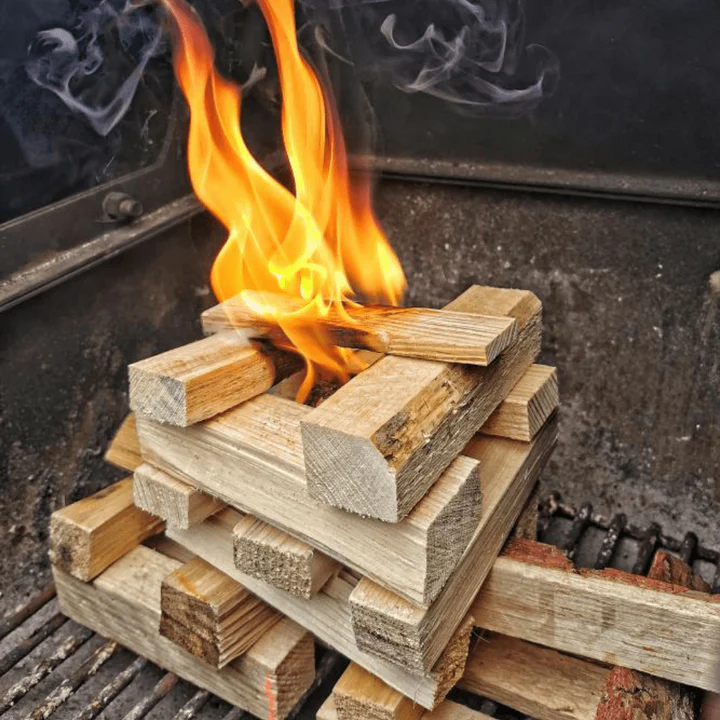
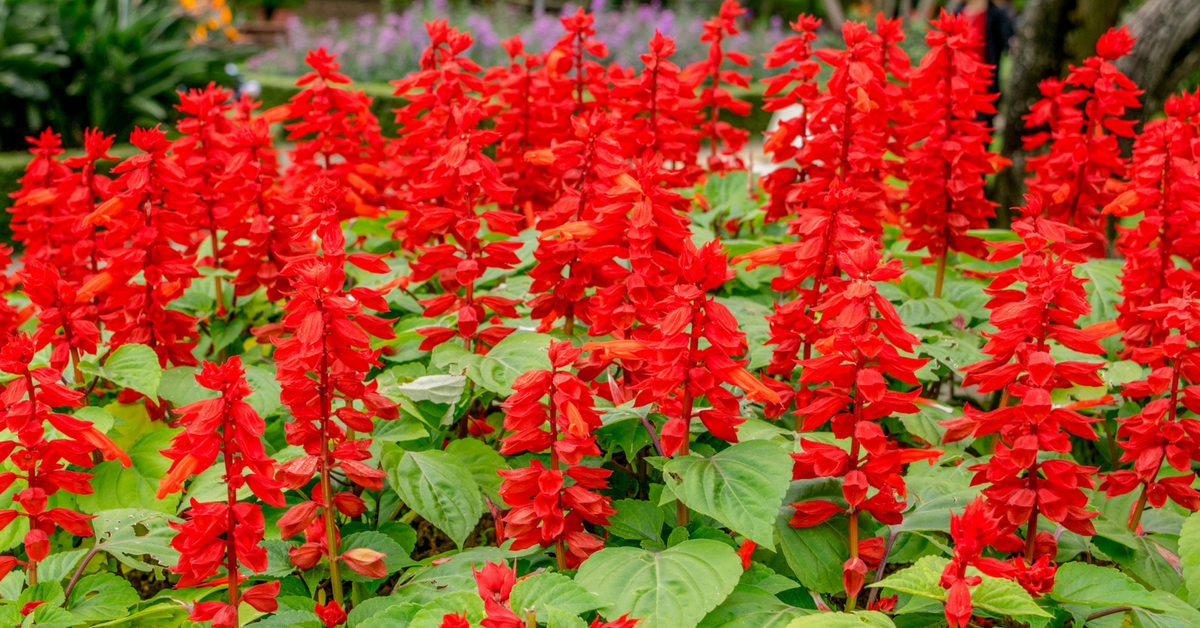
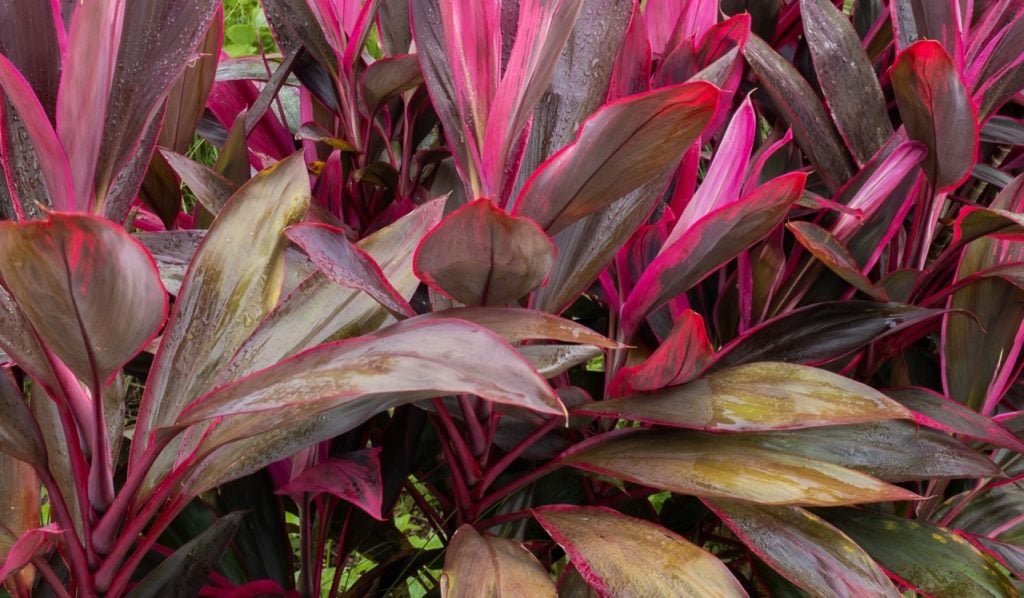

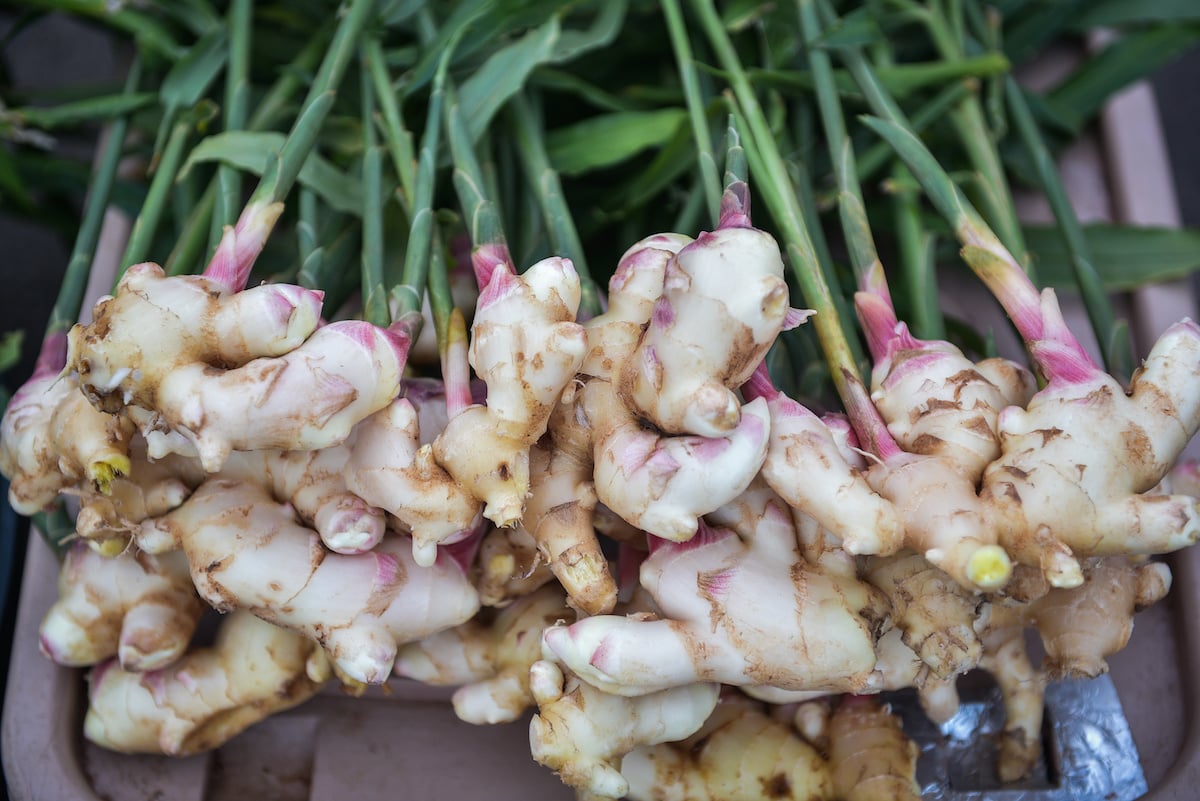

I HAVE SEEN THE COCOS PLUMOSA [QUEEN PALM FROM BRAZIL ORIGINALLY] IN THE UK THEY SEEM TO DO WELL
SEEN THEM 5 TO 8MTS HIGH.
HOPE THEY ARE STILL GROWING
GEORGE